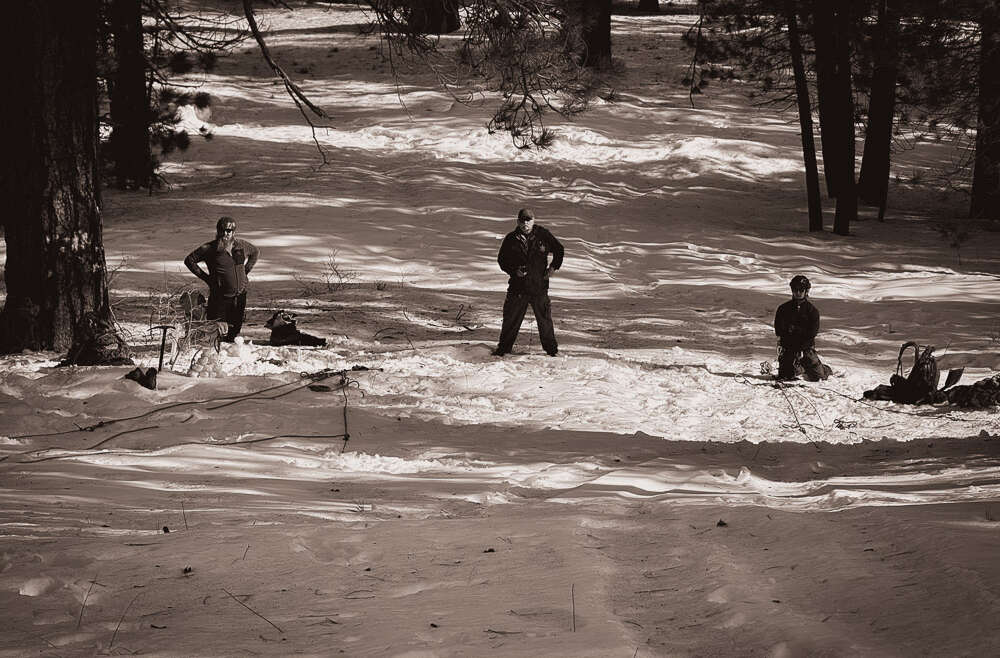Avalanche rescue is a critical and time-sensitive endeavor, designed to locate and extract individuals who have been buried by avalanches. Avalanche rescue is a complex task requiring coordination, speed, and skill. Survival rates decrease rapidly with time, underscoring the necessity for immediate action by companions and the swift deployment of organized rescue.
Transceiver Use: The primary tool for immediate rescue is the avalanche transceiver, a device that emits and receives signals to locate buried individuals. Every member of our team carries one, which is tested prior to use, udring avalanche training and actual rescue operations. When an avalanche occurs, survivors switch their transceivers to “search” mode to locate the beacons of those buried. This method is most effective when done immediately, as survival rates drop significantly after 15-18 minutes of burial.
Visual Clues: Rescuers look for visual cues like skis, poles, or clothing items on the surface. If such items are connected to a victim, this can expedite the rescue.
Probing: Once a signal is located, a probe (a long, collapsible pole) is used to pinpoint the exact location of the victim under the snow. Probes help in determining the depth and deciding the priority of rescue if multiple victims are buried.
Shoveling: After pinpointing the location, shoveling begins. Efficient shoveling techniques are crucial as they can significantly reduce the time it takes to reach the victim. It’s often recommended to have multiple people shoveling to speed up the process.
Helicopter Operations: In areas where helicopter access is possible, choppers are used for both rapid response and evacuation, although their ability to operate depends on weather conditions and the availability of a safe landing zone.
Medical Care: Once victims are located and extracted, immediate medical evaluation and care are provided. Conditions like hypothermia or trauma are common, requiring quick stabilization before transport to further medical facilities.

